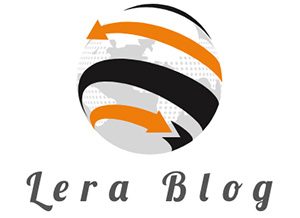What Is Toner’s Role in Printing?
Toner plays a crucial and often underappreciated role in printing. While most people are familiar with inkjet printers and their use of liquid ink, toner is entirely different—both in composition and how it functions. Understanding the role of toner in printing not only helps users make informed decisions but also ensures better performance and longevity of their printer.
So, what exactly is toner, how does it work, and why is it such a vital component in laser printing?
What Is Toner?
Toner is a fine powder made primarily from plastic resins, carbon black (for black prints), and colouring agents (in colour cartridges). This powder is specially formulated to be electrically charged and melt when heated, which is essential for the printing process used by laser printers and photocopiers.
Unlike inkjet printers that spray droplets of ink directly onto paper, laser printers use a sophisticated electrostatic process involving toner, a laser, and a drum unit to create precise images and text.
How Does Toner Work in the Printing Process?
The process begins when you hit “Print.” A laser beam scans back and forth across a rotating photosensitive drum inside the printer, creating a pattern of electrical charges that mirrors the content you want to print.
Toner particles, which are positively or negatively charged, are then attracted to the oppositely charged areas of the drum. The image formed on the drum is transferred onto the paper as it passes through, and finally, heated rollers (known as the fuser assembly) apply intense heat and pressure to bond the toner permanently to the paper. The result is a durable, high-resolution print that dries instantly.
The Benefits of Using Toner in Printing
There are several advantages to using toner over traditional liquid ink, especially in professional and business environments:
- High Page Yield
Toner cartridges are designed to print thousands of pages before needing a replacement. This makes them far more cost-effective in the long term, particularly for businesses, schools, and other organisations with high-volume printing needs.
- Fast Printing Speeds
Laser printers using toner can produce pages at a much faster rate than inkjet printers. This is ideal for offices where speed and efficiency are essential.
- Smudge-Proof Prints
Thanks to the heat-fusing process, toner prints are dry the instant they leave the printer. This eliminates the risk of smudging—perfect for double-sided documents and professional presentations.
- Sharper Text and Graphics
Toner allows for precise placement of particles, producing extremely sharp text and fine detail, which is why it’s often preferred for printing official documents and graphics.
- Lower Cost per Page
Although toner cartridges can be more expensive upfront compared to ink cartridges, their high page yield means a significantly lower cost per page over time.
Choosing the Right Toner Cartridge
Not all toner cartridges are created equal. There are standard-yield cartridges, which are suitable for general use, and high-yield cartridges, which are ideal for heavy-duty printing.
For users of HP laser printers, it’s essential to use genuine HP toner cartridges to maintain the printer’s performance and avoid potential issues. These original cartridges are engineered specifically for HP devices and undergo rigorous testing to ensure they meet quality and reliability standards. They also come with smart features like chip-based tracking to monitor toner levels and notify you when it’s time to replace the cartridge.
Using counterfeit or low-quality third-party toner can result in print defects, poor performance, and even long-term damage to your printer. Genuine cartridges help maintain print consistency and extend the life of your machine.
Environmental Impact and Recycling
One growing concern with toner cartridges is their environmental footprint. Fortunately, many manufacturers—including HP—offer recycling programmes that allow users to return used cartridges for proper disposal or refurbishment. This not only helps reduce landfill waste but also conserves resources by repurposing materials.
Additionally, remanufactured and compatible cartridges are available on the market, offering eco-friendly and cost-effective alternatives. However, it’s important to purchase these from reputable sources to ensure they meet quality standards and won’t damage your printer.
Common Toner FAQs
Q: Can toner dry out like ink?
No. Since toner is a powder, it doesn’t dry out over time like ink cartridges. This makes it a better choice for occasional printers who may not use their printer every week.
Q: Is toner safe to handle?
Yes, but care should be taken. While not generally harmful, toner powder can be irritating if inhaled or if it comes into contact with skin in large amounts. Always handle with care and avoid spilling.
Q: How do I know when toner is running low?
Most modern laser printers will display a warning or alert you via software when toner levels are low. Genuine toner cartridges often include smart chips that help track usage more accurately.
Toner is an integral part of the laser printing process, enabling fast, high-quality, and reliable printing for both home and business use. Its dry powder composition, combined with the heat-fusing printing method, produces durable prints that resist smudging and wear.








